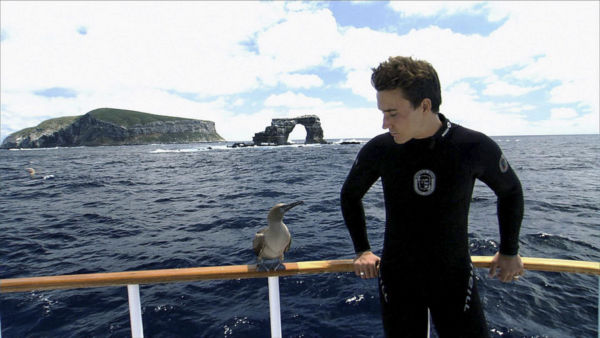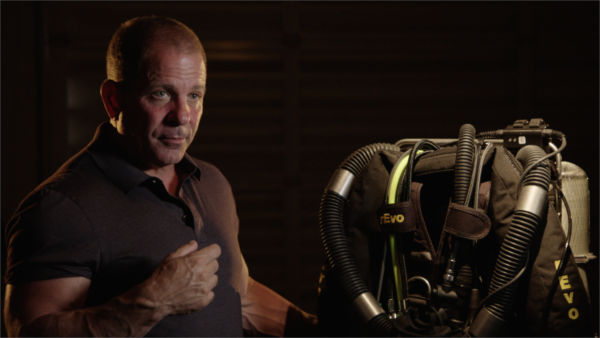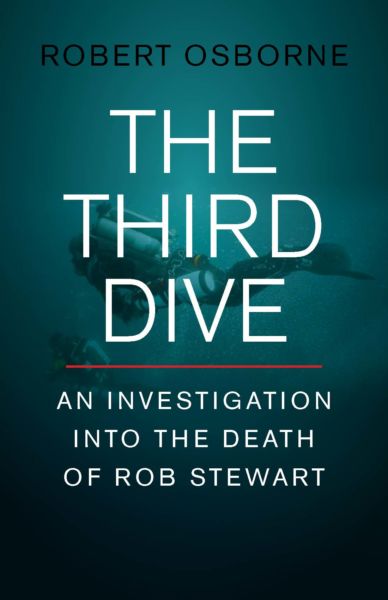There’s a new twist in the ongoing civil court case surrounding the death of environmentalist and filmmaker Rob Stewart, which throws one of the conventionally accepted narratives about responsibility into question. Many will recall that Stewart died tragically in an accident in January 2017 while completing the third dive of the day below 195 feet (60 m). He and his partner, Peter Sotis, both surfaced. But as Sotis climbed on the boat and passed out, Stewart was still in the water and vanished from the surface. Searchers recovered his body several days later.

The world mourned Stewart’s passing, and offered praise for the spotlight he shone on the issue of shark-finning through his films “Sharkwater” and, posthumously, “Sharkwater Extinction.”
Almost immediately, some media outlets began to report on a narrative that suggested that Peter Sotis was to blame for Stewart’s death. The implication was that an experienced technical diver — Sotis — had led a relatively inexperienced technical diver somewhere he wasn’t qualified to go.
Within a few months, Stewart’s parents launched a negligence suite against Sotis, Horizon Divers, the crew of the boat and the equipment manufacturer. “The dive instructor had this student’s life entrusted to him, and took him on a third, unprecedented dive to 220 feet depth to get a $15 piece of equipment,” said their lawyer, Michael Haggard, at a Miami press conference. He also suggested that “their decompression profiles were reduced by the dive instructor” and that Stewart “was not prepared to do that kind of dive and the number of dives that he did that day.
The narrative went that Stewart, through a lack of experience, went along with what his instructor told him to do. Although that’s been the most common explanation for the tragedy for several years, it turns out that it may not be true.
New information comes to light

Quite recently, two defense documents were filed in the Stewart case that offer information about Stewart’s qualifications as a technical diver. It turns out that, far from being a neophyte, he held multiple technical certifications at an instructor level from Technical Divers International (TDI.) Certifications included Draeger Dolphin rebreather instructor; trimix instructor; advanced trimix instructor; extended range instructor; advanced gas blending instructor; advanced wreck instructor; decompression procedures instructor; advanced nitrox instructor; and equipment specialist instructor.
Many of those certifications allow a diver to go deep, use mixed gas, and follow decompression protocols to get back to the surface. Along with an instructor certification from PADI, Stewart was arguably more qualified as a technical diver than Sotis. There’s little question that Stewart knew that the dives he was completing were risky, and fully understood the implications of adjusting his gradient factor and gas blend to shorten decompression times.
Counterarguments and further twists
Critics have counterargued that Stewart’s experience was related to open-circuit diving, not rebreathers. While that’s a valid argument, Stewart did have nearly 50 dives and a year of training on his rEvo rebreather unit, and much of the deep-diving theory is the same regardless of what apparatus a diver uses. Appreciating the risks of decompression sickness is a very basic lesson in deep diving.
Following these new revelations and in an interesting twist, rEvo’s lawyers have now suggested that if anyone was negligent, it was Sharkwater Productions, which was producing the film shoot, as well as Stewart’s companion Brock Cahill. He organized the dive with Horizon, set up the training with Sotis and Add Helium, and negotiated for the rebreathers with rEvo. According to the court documents, Sharkwater should have been following Canadian and American standards on to conduct a safe dive while filming. They contend Sharkwater Productions did not do that.
More revelations
These latest documents also allege that Stewart did not disclose a preexisting medical condition — a predisposition to black out. He talks about it in his book “Save the Humans” but, according to a court filing by Sotis, never mentioned it in his medical release when he began training. According to the court filing, “Robert Stewart, either in whole or in part, caused the injury, incident and damages alleged…by knowingly failing to disclose pre-existing medical conditions that rendered him unfit for the commercial dive operation he was engaged in at the time of his death on three separate Medical Questionnaires administered to him by Sotis and Add Helium LLC.”
The court document goes on to suggest that if the company had known about a predisposition to black out, Sotis and Add Helium would not have taken Stewart on as a student.
The fallout from the lawsuit continues. Sotis’ company Add Helium has gone bankrupt and Sotis says he has left the dive industry permanently. The case is dragging into the end of its fourth year and shows little signs of resolution.
Robert Osborne is a journalist and author who recently published “The Third Dive: An Investigation Into the Death of Rob Stewart.” Osborne continues to research the story and update Scuba Diver Life. His book is available on Amazon or in Canada at this link. All images courtesy dam builder Productions.


